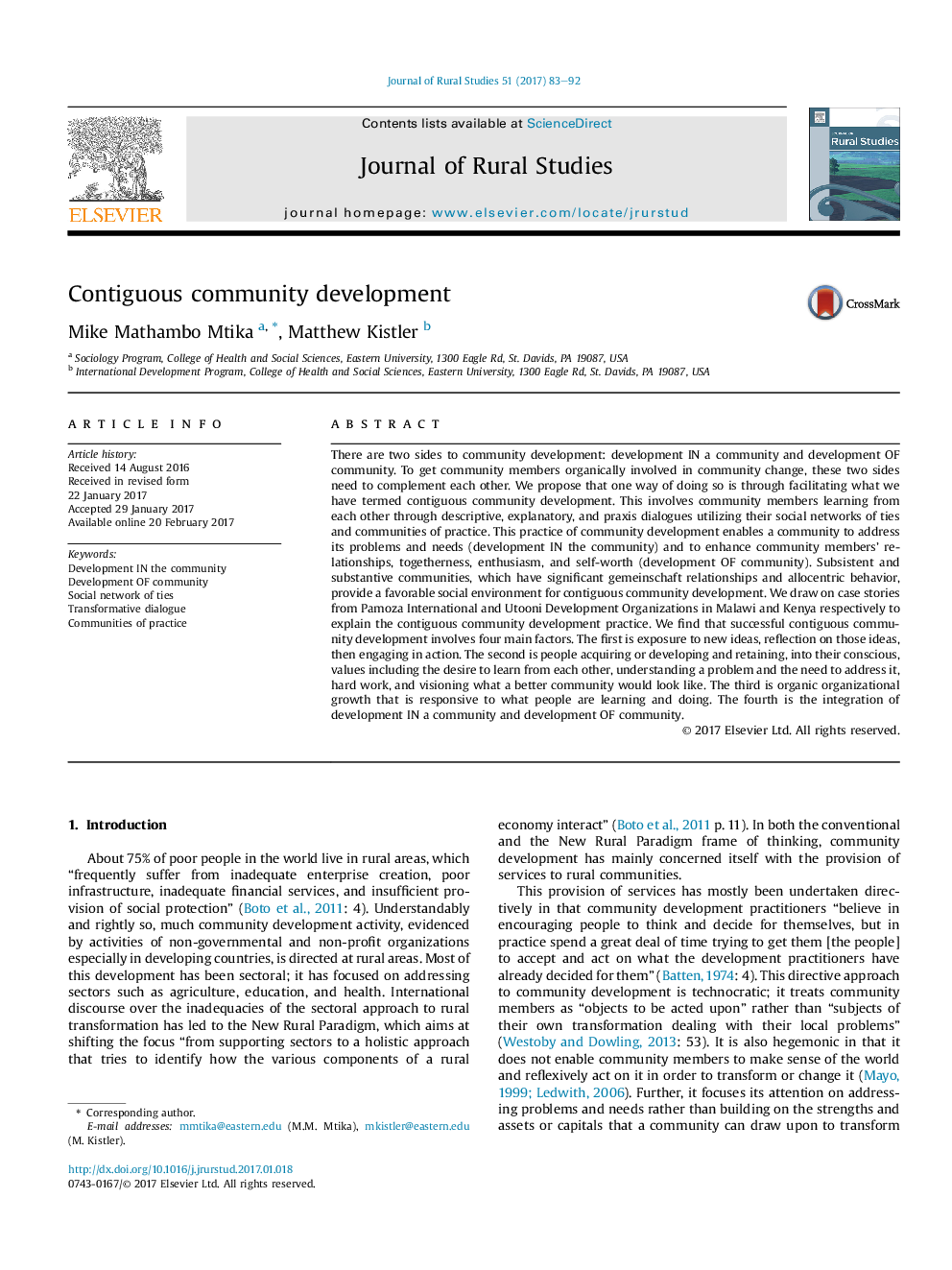| Article ID | Journal | Published Year | Pages | File Type |
|---|---|---|---|---|
| 6460123 | Journal of Rural Studies | 2017 | 10 Pages |
â¢Contiguous community development integrates and spreads development IN the community and development OF community.â¢Development IN the community addresses a community's problems and needs.â¢Development OF community enhances community members' relationships, togetherness, enthusiasm, and self-worth.â¢Integration and spreading of development IN and OF community occur through transformative dialogueâ¢Dialogue enables the sharing of ideas, develops relationships, and propagates action within and across communities.
There are two sides to community development: development IN a community and development OF community. To get community members organically involved in community change, these two sides need to complement each other. We propose that one way of doing so is through facilitating what we have termed contiguous community development. This involves community members learning from each other through descriptive, explanatory, and praxis dialogues utilizing their social networks of ties and communities of practice. This practice of community development enables a community to address its problems and needs (development IN the community) and to enhance community members' relationships, togetherness, enthusiasm, and self-worth (development OF community). Subsistent and substantive communities, which have significant gemeinschaft relationships and allocentric behavior, provide a favorable social environment for contiguous community development. We draw on case stories from Pamoza International and Utooni Development Organizations in Malawi and Kenya respectively to explain the contiguous community development practice. We find that successful contiguous community development involves four main factors. The first is exposure to new ideas, reflection on those ideas, then engaging in action. The second is people acquiring or developing and retaining, into their conscious, values including the desire to learn from each other, understanding a problem and the need to address it, hard work, and visioning what a better community would look like. The third is organic organizational growth that is responsive to what people are learning and doing. The fourth is the integration of development IN a community and development OF community.
